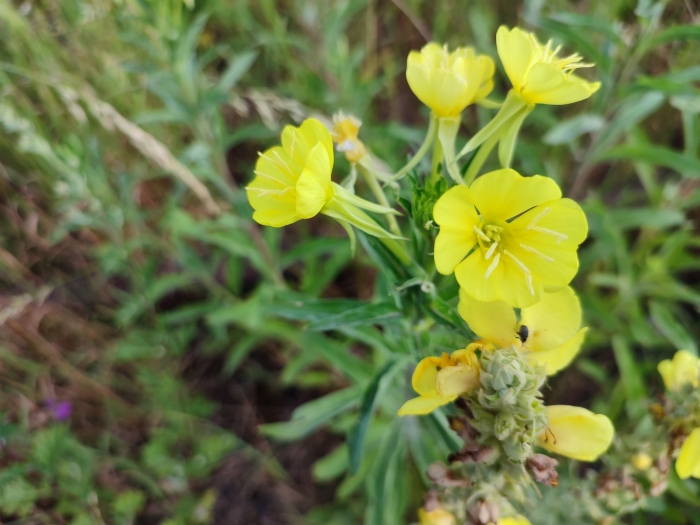Hairy Evening Primrose
(Oenothera villosa)
Hairy Evening Primrose (Oenothera villosa)
/
/

© xulescu_g
CC BY-SA 4.0
Image By:
© xulescu_g
Recorded By:
Copyright:
CC BY-SA 4.0
Copyright Notice:
Photo by: © xulescu_g | License Type: CC BY-SA 4.0 | License URL: http://creativecommons.org/licenses/by-sa/4.0/ | Uploader: xulescu_g | Publisher: iNaturalist |

























Estimated Native Range
Summary
Oenothera villosa, commonly known as hairy evening primrose, is a biennial herb that is native to a variety of habitats including prairies, grasslands, and open woodlands across much of the United States and Canada. It can reach up to 6 feet in height and typically has a sprawling form. The plant is characterized by its lance-shaped leaves and hairy stems. It produces distinctive yellow flowers that are most notable for their evening bloom time, opening at dusk and closing by the next noon. The flowers are moderately showy and are followed by elongated seed capsules.
Hairy evening primrose is appreciated for its ability to attract nocturnal pollinators such as moths. It is often used in wildflower gardens, naturalized areas, and as a border plant in cultivation. This species prefers full sun to part shade and is adaptable to a range of soil types, though it thrives in well-drained soils. It is drought-tolerant once established and requires minimal maintenance. While not invasive, it can self-seed prolifically under ideal conditions. Gardeners should be aware of its potential to spread but can manage this by deadheading spent flowers to prevent seeding.CC BY-SA 4.0
Hairy evening primrose is appreciated for its ability to attract nocturnal pollinators such as moths. It is often used in wildflower gardens, naturalized areas, and as a border plant in cultivation. This species prefers full sun to part shade and is adaptable to a range of soil types, though it thrives in well-drained soils. It is drought-tolerant once established and requires minimal maintenance. While not invasive, it can self-seed prolifically under ideal conditions. Gardeners should be aware of its potential to spread but can manage this by deadheading spent flowers to prevent seeding.CC BY-SA 4.0
Plant Description
- Plant Type: Herb
- Height: 1.5-2.5 feet
- Width: 1-1.5 feet
- Growth Rate: Moderate
- Flower Color: Yellow
- Flowering Season: Summer, Fall
- Leaf Retention: Deciduous
Growth Requirements
- Sun: Full Sun, Part Shade
- Water: Medium
- Drainage: Fast, Medium
Common Uses
Bee Garden, Butterfly Garden, Groundcover, Low Maintenance, Street Planting
Natural Habitat
native to a variety of habitats including prairies, grasslands, and open woodlands across much of the United States and Canada
Other Names
Common Names: Large-flowered Evening Primrose , Yellow Evening Primrose
Scientific Names: Oenothera villosa , Oenothera cockerellii , Oenothera strigosa var. cheradolphila , Oenothera villosa var. villosa , Onagra cockerellii
GBIF Accepted Name: